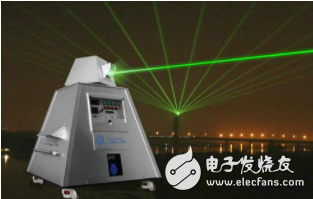Researchers at Purdue University and Stanford believe that they have developed a novel laser sensing technology that is more powerful and cheaper than the prior art and has a wide range of uses, for example, we can use laser guidance self-driving car.
The researchers say that new technologies are faster to process than traditional cutting-edge laser beam control devices, and conventional devices use phased antenna arrays. The laser beam control device developed by Purdue University and Stanford University is being tested. It is based on the interaction of light and matter. The silicon super surface and short light pulse will act. The pulse can be locked by the spectrum containing the frequency comb. The mode laser is emitted. The new laser beam control can scan a wide range of scenes at nanoseconds or picoseconds, and the time required by current technology is measured in microseconds.
Amr Shaltout, a postdoctoral fellow in materials science and engineering at Stanford, believes: “Compared to the existing technology, the new technology is much simpler and consumes much less energy.†He added: “This technology will be completely different. The fields are fused together, one is nanophotonic super-surface technology, and the other is ultra-fast optical technology."
Laser beam control technology is a fairly critical technology that can be used in many places, such as navigation, space flight, radar applications, imaging, label scanning, robotics, archaeology, mapping, atmospheric physics, and more. Increasing the laser scanning speed is related to higher frame rates, and is also related to improving image resolution.

Purdue University professor Vladimir Shalaev said: "The concept of Charlert is quite powerful. To be honest, we are a bit surprised. The concept is so simple and efficient. It is much simpler and much faster than the technology currently used. Why haven’t anyone tried it before?†He also believes that this achievement is the result of the cooperation between Purdue and Stanford.
Researchers believe that the technology they develop is a "chip-compatible technology" that does not require additional energy. The new technology is based on the interaction of light and matter, with a super-surface on one side and a short pulse on the other. This short pulse comes from a mode-locked laser with an equidistant phase-locked frequency line. There is one more important point: the new technology uses ultra-surface, and the super-surface comes from patterned silicon film.
Self-driving cars use light to detect ranging, or use lidar, which is similar to radar. It emits infrared or visible light. The pulse is reflected after it hits the object. The laser radar measures the time it takes from launch to reflection. image. Now we will see the rotating equipment on the roof of the driverless car, and laser radar can replace this equipment. The problem is that current technology is too expensive.
Shaletut said that the use of photon super-surface is a key new breakthrough. He also said that the supersurface provides a simpler, more compact and more energy efficient solution for optoelectronic design. Combining the two technologies makes the solution simpler.
In the phase array optical technology currently used, the radiation of each antenna is controlled separately. In the system developed by Charlert, the frequency of light emitted by each part is slightly different, which means that it is not necessary to continuously control each antenna, and the amount of power consumed during processing is also reduced.
Shaletut believes that interdisciplinary research is key to their success. He said: "Sometimes, people outside the industry will help us, let us see solutions, find solutions, solve problems in different fields, and connect them together."
Now researchers need to optimize the technology to get new technology out of the lab and into the real world. They are looking for investors, partners, and may also license technology to others. In the beginning, new technologies may appear in some places, such as loading in shop scanning equipment, being used by airports, and then entering autonomous vehicles and even being used by mobile phone manufacturers.
Shaletut believes: "It seems that this is a destructive technology, it may bring about tremendous changes to the industry, this industry is quite huge, is an emerging industry."
Magnetoelectric Proximity Switch
The magnetic proximity switch is a kind of proximity switch. The magnetic proximity switch is one of many types in the sensor family. It is made by the use of electromagnetic working principle and advanced technology. It is a position sensor. It can transform the non-electricity or electromagnetic quantity into the desired electric signal through the change of the positional relationship between the sensor and the object, so as to achieve the purpose of control or measurement.
Motion Sensor Control Switch,Photoelectric Switch Sensors,Plug In Photoelectric Switch,Magnetoelectric Proximity Switches
Changchun Guangxing Sensing Technology Co.LTD , https://www.gx-encoder.com
